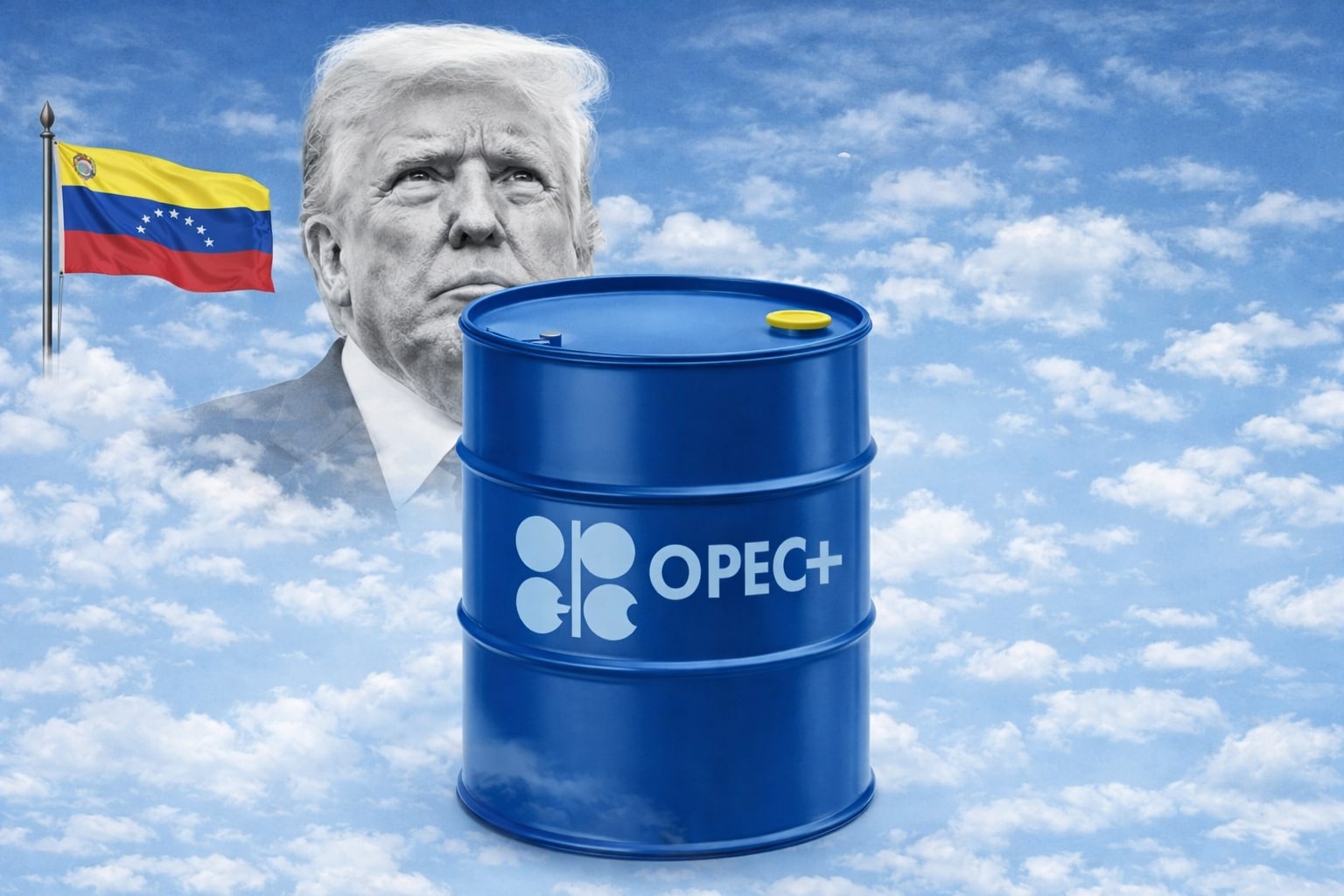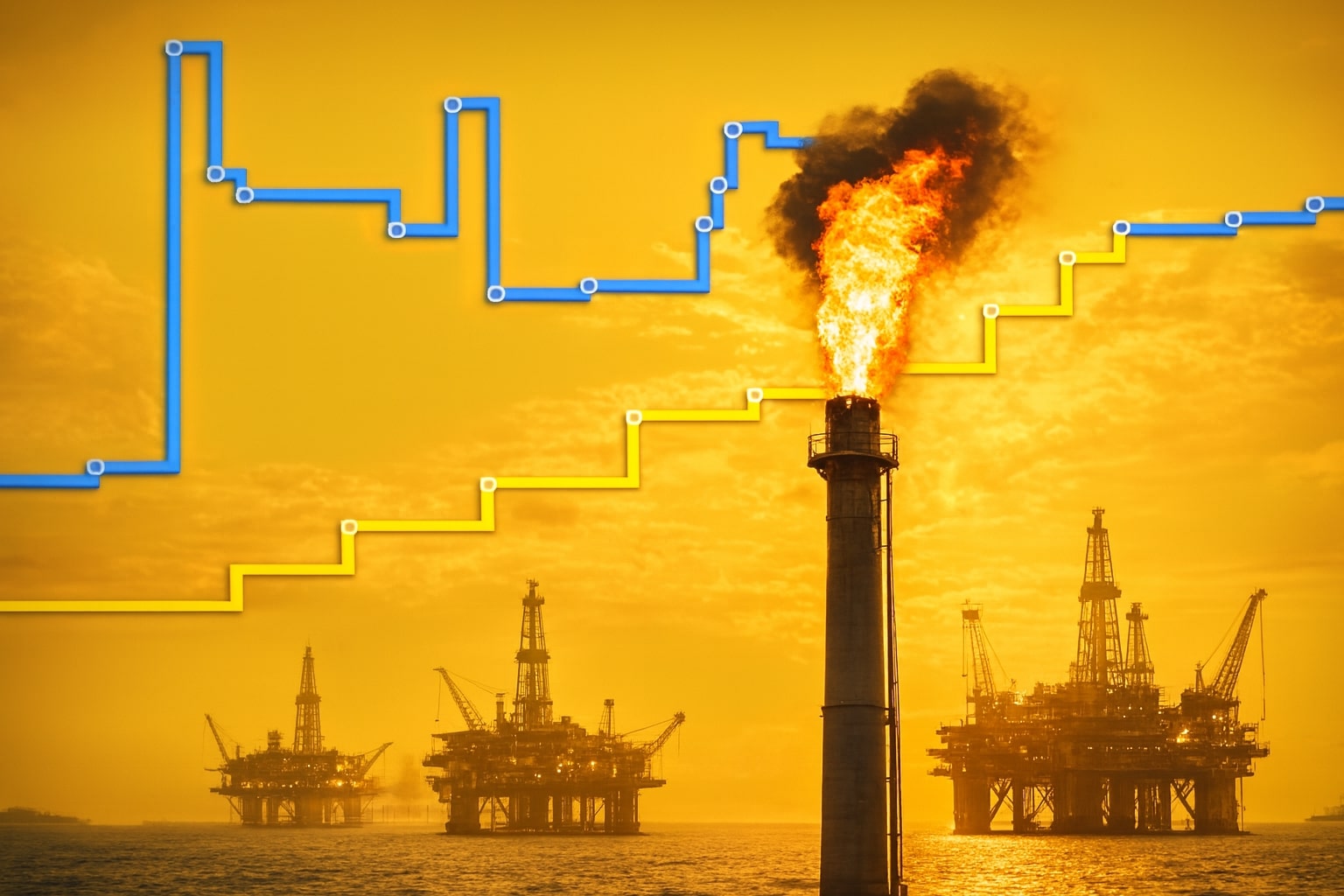
Natural Gas Price Forecast: NG=F Rises to $3.42 as Cold Weather and Supply Cuts Ignite Global Market Rebound
With U.S. futures up 1.54%, European gas steady near €31.65/MWh, and Western Canada under storage pressure, traders position for a bullish winter | That's TradingNEWS
Natural Gas Price (NG=F) Rises to $3.42 as Cold Weather, Record Storage, and LNG Shifts Reshape Global Flows
Natural gas futures are holding firm near $3.42 per MMBtu (+1.54%), as colder weather forecasts across the United States and Europe ignite renewed buying interest while North American inventories approach record highs. The rally marks a sharp rebound from last week’s low of $3.18, with traders rotating into front-month November contracts ahead of the December rollover. The Henry Hub benchmark remains the global reference, but heavy storage builds in Western Canada and robust U.S. output have tempered upside momentum even as European and Asian LNG prices stay subdued. Market sentiment is turning cautiously bullish after an extended period of short-covering, setting the stage for volatile winter price action.
Weather Shifts Drive Short-Covering Surge in U.S. Futures
The natural gas market opened higher for the second consecutive session, buoyed by sharply colder model runs indicating below-average temperatures in the northern U.S. through early November. This shift in weather expectations has triggered renewed speculative positioning, lifting the NG=F November contract back above $3.40. According to EIA forecasts, heating demand is set to rise 9% week-over-week, particularly in the Midwest and Northeast. The colder weather coincides with a reduction in gas-directed drilling, as producers scale back operations due to recent price weakness. Analysts expect a moderate rebound in consumption-driven storage withdrawals beginning in early November, potentially tightening balances as winter demand intensifies.
Read More
-
Broadcom Stock Price Forecast AVGO Stock Sinks to $324 After $414 Peak – Is $390 the Next Target?
17.12.2025 · TradingNEWS ArchiveStocks
-
XRP Price Forecast: Can XRP-USD Price $1.64 Hold Before a Run Toward $2.50–$3.00?
17.12.2025 · TradingNEWS ArchiveCrypto
-
Oil Price Forecast: WTI at $56 and Brent at $60 as Trump’s Venezuela Blockade Collides With 20% Yearly Slide
17.12.2025 · TradingNEWS ArchiveCommodities
-
Stock Market Today: Dow Outperforms at 48,271 While S&P 500 and Nasdaq Slide on Oracle AI Debt Fears
17.12.2025 · TradingNEWS ArchiveMarkets
-
GBP/USD Price Forecast - Pound Under Pressure as Softer UK CPI Drags Cable Back Toward 1.33
17.12.2025 · TradingNEWS ArchiveForex
Western Canada’s Storage Glut Caps AECO and Westcoast Benchmarks
Across Western Canada, natural gas prices remain under pressure as oversupply conditions persist. AECO C hub prices hover near $1.98, while Westcoast Station 2 fell to $1.35, reflecting the strain from high storage and limited egress capacity. Maintenance delays and slow LNG Canada commissioning have left regional storage at record levels, according to NGI data. These imbalances contrast sharply with steadier Henry Hub pricing, highlighting the divergence between U.S. and Canadian fundamentals. Analysts note that AECO’s disconnect could persist until LNG Canada begins exporting in late 2026, which would add roughly 1.8 Bcf/d of new demand, easing the current bottleneck.
Europe’s TTF Gas Prices Stay Rangebound Amid Stable Supply and Political Overhang
In Europe, the Dutch TTF front-month contract trades around €31.65/MWh ($10.78/MMBtu), barely changed on the day, as mild weather and stable LNG flows limit volatility. Norwegian supply remains steady, while the EU’s storage facilities are 82.8% full, down from 95% a year ago but still sufficient to meet short-term heating needs. Political developments, however, continue to shape the mid-term outlook. EU ministers have endorsed a phased ban on Russian gas imports by 2028, with new contracts prohibited after 2026. Traders are watching closely as the EU Parliament negotiates final terms, a process that could determine how quickly European gas hubs adapt to non-Russian supply diversification.
EIA Storage Outlook and Production Trends Define U.S. Balance Sheet
The U.S. Energy Information Administration (EIA) projects an injection of 83 Bcf for the week ending October 17, pushing total Lower 48 inventories toward 3.65 Tcf, roughly 6% above the five-year average. Domestic production remains robust near 104.3 Bcf/d, despite a slowdown in drilling activity from associated gas wells in the Permian Basin, where lower crude prices have led to reduced rig counts. Forecasts from Tradition Energy suggest natural gas will trade within a fundamental support range of $3.25–$3.45, with upward bias should drilling cutbacks extend into early 2026. Analyst Gary Cunningham expects limited growth in associated gas output, potentially reinforcing winter bullish sentiment if demand surges.
Permian and Appalachian Output Diverge as Drilling Adjustments Loom
The Permian Basin remains the dominant source of U.S. associated gas, but its future growth is tied to crude oil economics. With oil futures at $57.86/barrel, well below the $60 breakeven required for new drilling, operators are trimming capital expenditure plans for Q1 2026. The result could be a gradual decline in gas production from the basin, offset partially by higher flows from the Marcellus and Utica regions in Appalachia. However, infrastructure constraints continue to limit outbound capacity, with pipeline utilization near 98%. The bottleneck could cap near-term growth, keeping Henry Hub supported above $3.20 even if weather conditions moderate.
Global LNG Market Balances Between Surplus and Structural Growth
LNG trade dynamics remain central to price formation. The U.S. currently exports 14.2 Bcf/d, representing nearly 13.6% of total gas output. New capacity under construction, including projects from Venture Global and Cheniere, could add another 5 Bcf/d by late 2026, amplifying U.S. influence on global pricing. In Europe, LNG import volumes are surging, with arrivals reaching their highest levels of 2025 amid weak Asian competition. China’s subdued demand—linked to slower industrial recovery and elevated domestic stockpiles—has allowed Europe to secure cargoes at discounted rates. Meanwhile, benchmark Asian JKM prices remain around $11.20/MMBtu, maintaining parity with TTF and dampening arbitrage opportunities for U.S. exporters.
Technical Landscape: $3.50 Resistance and the Path Toward $3.80
From a technical perspective, NG=F has established key support near $3.25, aligning with last week’s low and the 50-day moving average. Momentum indicators suggest growing bullish traction, with RSI climbing toward 57 and MACD crossing above its signal line for the first time since mid-September. A decisive break above $3.58 could trigger acceleration toward $3.80, followed by a longer-term target near $4.00, which corresponds to the EIA’s projected 2026 price level. On the downside, failure to maintain $3.25 could push prices back toward $3.05, though current fundamentals favor buyers given the seasonal shift and colder forecasts extending through early November.
European and Canadian Balances Highlight Global Fragmentation
While U.S. futures are gaining traction, global gas markets remain fragmented. Europe’s TTF benchmark is anchored by strong LNG inflows and muted consumption, while Canada’s AECO market continues to suffer from oversupply. This divergence underscores the structural gap between North American production growth and export capacity. Until new LNG terminals—including LNG Canada and Plaquemines Phase II—come online, storage congestion in Western Canada and the U.S. Gulf Coast will weigh on basis differentials. Nevertheless, with global gas demand expected to rise 2.5% in 2026, the fundamental floor for Henry Hub is likely to strengthen, supported by industrial demand and power generation needs in Asia and Latin America.
Outlook for Natural Gas (NG=F): Bullish Bias Supported by Weather and Supply Cuts
The natural gas market’s near-term trajectory hinges on weather persistence, production moderation, and export flows. With U.S. drilling activity slowing, European gas diversification underway, and North American inventories peaking, the setup favors higher winter prices. As of now, Henry Hub (NG=F) remains in a balanced but bullish structure, with traders eyeing the $3.80–$4.00 range into year-end. The combination of strong seasonal demand, reduced associated gas, and expanding LNG exports underpins a constructive outlook for 2026.
Verdict: Buy — Target Range $3.80–$4.00 (Short-to-Medium Term)
Supported by tightening supply expectations, colder weather, and resilient demand, natural gas appears poised for continued gains as the market transitions toward peak winter consumption.



















